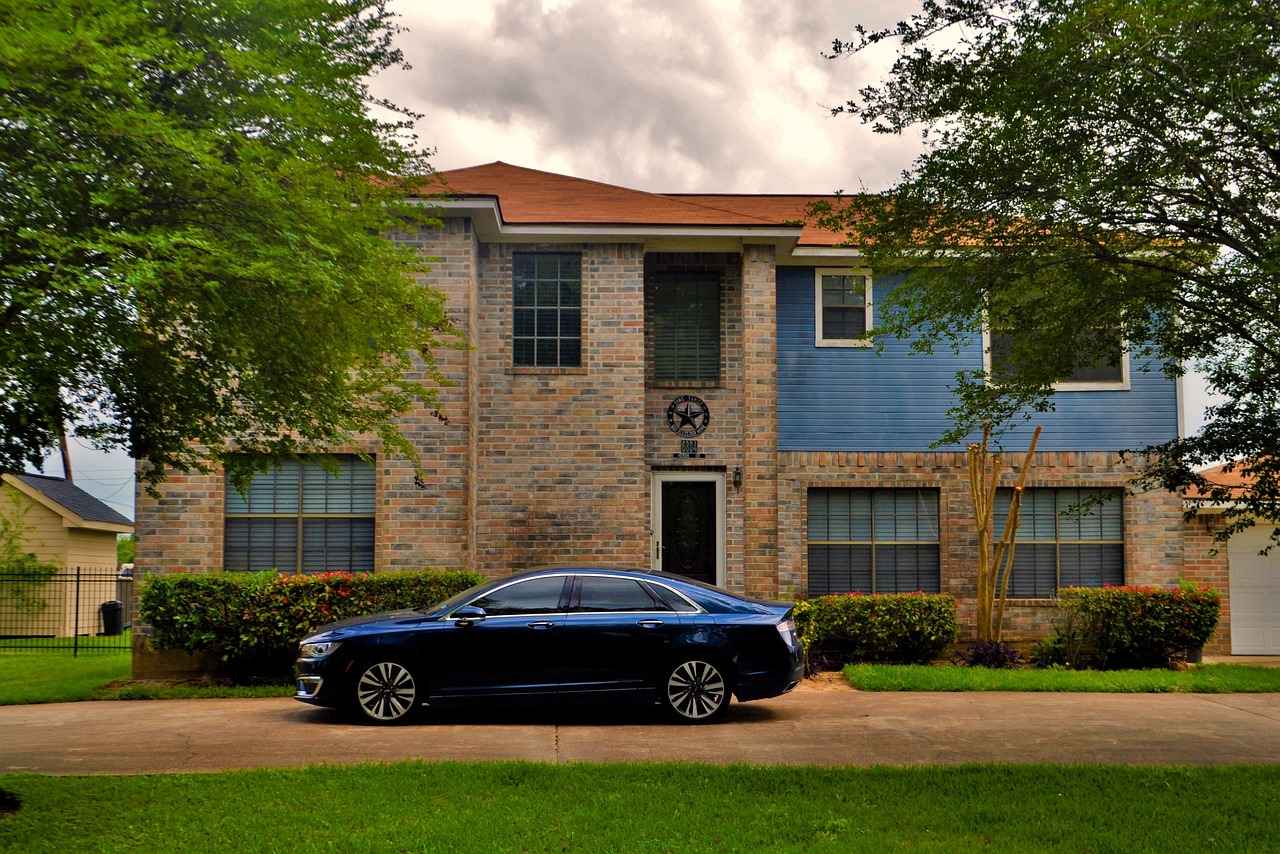This article delves into the crucial aspects of VA loans for veterans in 2025, examining eligibility requirements, benefits, the application process, and the latest trends affecting these loans.
Understanding VA Loans
VA loans are a unique financing option specifically designed to support veterans in acquiring homes. These loans are backed by the U.S. Department of Veterans Affairs, making them a vital resource for those who have served in the military. The primary goal of VA loans is to facilitate homeownership without the burdens typically associated with traditional mortgage loans.
Eligibility Criteria for VA Loans
To qualify for a VA loan, veterans must meet specific eligibility criteria. This includes:
- Service Duration: Veterans must have served a minimum period in active duty.
- Discharge Status: An honorable discharge is typically required.
Service Requirements
Understanding the service duration is essential. Generally, veterans need at least 90 days of active service during wartime or 181 days during peacetime. Exceptions may apply for those who were discharged due to service-related injuries.
Active Duty vs. Reserves
Both active duty and reserve service members can qualify for VA loans, but the eligibility criteria may differ slightly. Active duty members typically have more straightforward qualification paths compared to reservists.
Discharge Types
The type of discharge received can significantly influence eligibility. Discharges categorized as honorable or general typically qualify, while dishonorable discharges may disqualify veterans from accessing VA loan benefits.
Credit Score and Financial Considerations
While VA loans are more accessible, maintaining a good credit score is still important. Lenders often look for a credit score of at least 620, but some may be more flexible.
Benefits of VA Loans
VA loans provide numerous advantages over conventional loans:
- No Down Payment: One of the most appealing features of VA loans is the absence of a down payment requirement, making homeownership more accessible.
- Lower Interest Rates: VA loans typically offer lower interest rates than traditional loans, resulting in significant savings over the loan’s lifetime.
- No PMI: Unlike conventional loans, VA loans do not require private mortgage insurance, further reducing monthly costs.
The VA Loan Application Process
Navigating the VA loan application process can be daunting, but understanding the steps can simplify the journey:
- Gathering Necessary Documentation: Key documents include proof of service, income verification, and credit history.
- Working with Lenders: It’s crucial to choose VA-approved lenders and compare their offers to find the best terms.
Current Trends in VA Loans for 2025
Staying informed about current trends is essential for veterans considering VA loans. Key areas to watch include:
- Interest Rate Trends: Economic fluctuations can affect interest rates, impacting loan affordability.
- Legislative Changes: Recent or upcoming policy changes can significantly influence veterans’ access to VA loans.

Understanding VA Loans
VA loans, or Veterans Affairs loans, are a specialized form of financing aimed at assisting veterans in purchasing homes. These loans are backed by the U.S. government, making them a valuable resource for those who have served in the military. The primary purpose of VA loans is to provide veterans and active-duty service members with the opportunity to achieve homeownership without the financial burdens commonly associated with traditional mortgage loans.
One of the most significant features of VA loans is the absence of a down payment. This is particularly beneficial for veterans who may not have substantial savings but wish to invest in a home. Additionally, VA loans do not require private mortgage insurance (PMI), which can add considerable costs to monthly payments in conventional loans. This combination of benefits makes homeownership more accessible for veterans and their families.
The importance of VA loans extends beyond financial savings. They symbolize a commitment to support those who have served the nation. By providing favorable loan terms, the VA aims to honor the sacrifices made by veterans, helping them transition into civilian life with greater ease.
Eligibility for VA loans is determined by various factors, including the length of service and discharge status. Veterans must meet specific service requirements to qualify, which can vary depending on the time of service and the nature of their discharge. Understanding these criteria is crucial for veterans who wish to take advantage of this financing option.
In summary, VA loans play a critical role in facilitating homeownership for veterans. They offer unique benefits that cater specifically to the needs of those who have served, ensuring that they have the necessary support to secure their homes. As the housing market evolves, staying informed about VA loan options remains essential for veterans aiming to achieve their homeownership dreams.

Eligibility Criteria for VA Loans
Determining eligibility for VA loans is a critical step for veterans aiming to secure financing for their homes. Understanding the requirements is essential, as it can significantly impact the loan process and the benefits available to veterans. This section will delve into the key factors that influence eligibility, including service duration, discharge status, and other important criteria.
- Service Duration: To qualify for a VA loan, veterans must have served a minimum period in the military. Generally, this includes:
- 90 consecutive days of active service during wartime.
- 181 days of active service during peacetime.
- More than 6 years of service in the National Guard or Reserves.
- Discharge Status: The type of discharge received can greatly affect eligibility. Acceptable discharge types include:
- Honorable Discharge
- General Discharge Under Honorable Conditions
- Veterans with other-than-honorable discharges may face challenges in obtaining a VA loan, and each case is evaluated on an individual basis.
- Additional Factors: Other essential elements that can influence eligibility include:
- Verification of military service through a Certificate of Eligibility (COE).
- The need to meet the lender’s credit requirements, although VA loans are generally more lenient.
- Income stability and debt-to-income ratio, which lenders assess to ensure the borrower can manage loan repayments.
By understanding these eligibility criteria, veterans can better prepare for the VA loan application process, ensuring they meet all necessary requirements to take advantage of this valuable benefit.
Service Requirements
When it comes to securing a VA loan, understanding the is crucial for veterans. These loans are specifically designed to assist those who have served in the military, but there are specific criteria that must be met to qualify. This section delves into the essential duration of service required and highlights any exceptions that may apply.
To be eligible for a VA loan, veterans typically need to have served a minimum duration of active duty. The standard requirement is 90 days of active service during wartime or 181 days during peacetime. However, these requirements may vary based on the time period of service. For instance, veterans who served in the Gulf War must have completed at least 24 months of continuous service or the full period for which they were called to active duty.
It’s important to note that there are exceptions to these service duration requirements. For example, veterans who were discharged due to a service-related disability may qualify for a VA loan regardless of their length of service. Additionally, members of the National Guard and Reservists may also be eligible if they have completed at least six years of service and have been called to active duty for at least 90 days.
Understanding the nuances of service requirements can significantly impact a veteran’s ability to secure a loan. Veterans should ensure they have the necessary documentation, such as their DD Form 214, which provides proof of military service and discharge status. This form is essential when applying for a VA loan, as it verifies eligibility based on service history.
In summary, while the general service requirements for VA loans are straightforward, veterans should be aware of the specific conditions and exceptions that may apply to their situation. By understanding these criteria, veterans can better navigate the loan application process and take advantage of the benefits available to them.
Active Duty vs. Reserves
When exploring the eligibility criteria for VA loans, understanding the distinctions between active duty and reserve service is essential. Each status carries unique implications for veterans seeking financing for their homes.
Active duty service refers to full-time military service in the armed forces. Veterans who have served on active duty typically have a clearer path to qualifying for VA loans. This is because they meet the minimum service requirements set by the Department of Veterans Affairs (VA). Generally, active duty veterans must have served a minimum period, often 90 days during wartime or 181 days during peacetime, to be eligible.
In contrast, reserve service involves part-time military duty, where service members may be called to active duty during times of need. While reservists are also eligible for VA loans, their eligibility can depend on specific conditions. For instance, reservists must have completed a minimum of six years of service in the Selected Reserve or have been called to active duty for a period of 90 days or more. This distinction is critical as it determines not only eligibility but also the benefits available to them.
Furthermore, the type of discharge received upon completion of service—whether from active duty or reserves—can significantly impact VA loan qualifications. A honorable discharge is typically required to access the full benefits of VA loans, while other types of discharges may limit eligibility.
It is also worth noting that eligibility can vary based on the length of service and the nature of the duty performed. For example, those who have served in combat zones may have different considerations compared to those who have not. Understanding these nuances is crucial for veterans as they navigate the VA loan process.
In summary, both active duty and reserve service members have pathways to qualify for VA loans, but the requirements differ. Veterans should thoroughly understand their service status and its implications for loan eligibility to make informed financial decisions.
Discharge Types
When it comes to securing a VA loan, the type of discharge a veteran receives from military service plays a critical role in determining their eligibility. Understanding the various classifications of discharge is essential for veterans who wish to take advantage of the benefits that VA loans offer.
There are several discharge types, and each has its own implications for loan approval:
- Honorable Discharge: Veterans who receive an honorable discharge are fully eligible for VA loans. This classification indicates that the service member has met the required standards of conduct and performance, making them a prime candidate for VA loan benefits.
- General Discharge: A general discharge under honorable conditions may still qualify veterans for VA loans, although lenders may scrutinize their application more closely. Factors such as the veteran’s overall financial health and credit history will be considered.
- Other Than Honorable Discharge: Veterans with an other than honorable discharge may face challenges in securing a VA loan. While it’s not an automatic disqualification, lenders may require additional documentation and justification for the loan application.
- Bad Conduct Discharge: This type of discharge typically results in ineligibility for VA loans. Veterans who receive a bad conduct discharge may need to seek alternative financing options.
- Dishonorable Discharge: A dishonorable discharge is the most severe form of discharge and usually precludes veterans from accessing VA loan benefits. This classification indicates serious misconduct, which lenders will consider when assessing eligibility.
It’s important for veterans to understand their discharge status and its implications for VA loan eligibility. Consulting with a knowledgeable VA loan specialist can help clarify specific situations and guide veterans through the application process, ensuring they make informed decisions about their financial futures.
Credit Score and Financial Considerations
When it comes to securing a VA loan, understanding the importance of financial health is crucial, even though these loans are generally more accessible to veterans. This section delves into the credit score requirements and other financial factors that lenders evaluate during the loan application process.
Credit Score Requirements
While the VA does not impose a minimum credit score for loan eligibility, most lenders typically prefer a score of at least 620. A higher credit score can significantly improve your chances of loan approval and may also lead to better interest rates. Therefore, veterans should strive to maintain a good credit profile by managing debts responsibly and making timely payments.
Debt-to-Income Ratio
Another vital aspect that lenders consider is the debt-to-income (DTI) ratio. This ratio compares your monthly debt payments to your gross monthly income. For VA loans, lenders often look for a DTI ratio of 41% or lower. A lower DTI indicates that you have a manageable level of debt relative to your income, which can enhance your loan application.
Employment History
Lenders also assess your employment history to gauge financial stability. A consistent employment record, ideally spanning two years or more in the same field, can positively influence your application. Sudden job changes or gaps in employment may raise red flags for lenders.
Other Financial Factors
- Assets and Reserves: Having additional savings or assets can provide lenders with reassurance about your ability to cover mortgage payments.
- Loan Type: The type of VA loan you are applying for can also impact financial requirements. For instance, a cash-out refinance may have different criteria compared to a purchase loan.
In summary, while VA loans offer unique advantages for veterans, it is essential to understand that financial health remains a critical component of the approval process. By focusing on improving credit scores, managing debt, and maintaining stable employment, veterans can enhance their chances of securing favorable loan terms.

Benefits of VA Loans
VA loans provide an array of significant advantages that make them an appealing option for eligible veterans and active-duty service members. Understanding these benefits can help individuals make informed decisions when considering home financing.
- No Down Payment Requirement: One of the most compelling features of VA loans is the absence of a down payment. This unique benefit allows veterans to purchase a home without the need to save for a large upfront cost, making homeownership more accessible.
- Competitive Interest Rates: VA loans typically offer lower interest rates compared to conventional loans. This can result in substantial savings over the life of the loan, enabling veterans to manage their monthly mortgage payments more effectively.
- No Private Mortgage Insurance (PMI): Unlike many traditional loans, VA loans do not require private mortgage insurance. This absence of PMI can lead to lower monthly payments, further easing the financial burden on veterans.
- Flexible Credit Requirements: VA loans are often more forgiving regarding credit scores. While lenders still consider credit history, veterans may qualify for loans even with less-than-perfect credit, making it easier to secure financing.
- Assumable Loans: VA loans are assumable, meaning that if a veteran sells their home, the buyer can take over the existing mortgage under the same terms. This feature can be a strong selling point in a competitive real estate market.
- Funding Fee Waivers: Some veterans may be eligible for a waiver of the VA funding fee, which is typically required for VA loans. This can significantly reduce the overall cost of obtaining a loan.
Overall, the are designed to support veterans in achieving their homeownership dreams while providing financial flexibility and security.
No Down Payment Requirement
One of the most significant advantages of VA loans is the , which simplifies the path to homeownership for veterans. This unique feature allows eligible veterans to purchase a home without the burden of a hefty upfront payment, making it easier to transition from military service to civilian life.
Traditionally, homebuyers are expected to make a down payment ranging from 3% to 20% of the home’s purchase price. However, for veterans utilizing VA loans, this financial barrier is eliminated. This not only enhances accessibility but also empowers veterans to invest in their futures without depleting their savings. Many veterans may find that they have limited funds available after serving, and the absence of a down payment requirement enables them to allocate their resources towards other essential expenses, such as moving costs or home improvements.
The no down payment policy is particularly beneficial in today’s real estate market, where home prices have surged. For instance, in many areas, the median home price can be daunting for first-time buyers. By allowing veterans to secure financing without a down payment, VA loans provide a significant advantage, enabling them to compete in a competitive housing market.
Furthermore, this feature can also lead to better financial stability. Without the need for a down payment, veterans can maintain a stronger financial position, reducing the risk of financial strain or default. This is especially relevant for those who may face unexpected expenses during the home-buying process.
In summary, the of VA loans is a transformative benefit that facilitates homeownership for veterans. It alleviates financial pressure, promotes stability, and ultimately supports veterans in building a secure and prosperous future.
Lower Interest Rates
When considering financing options, veterans often find that VA loans offer significant advantages, particularly in terms of lower interest rates. These favorable rates can lead to substantial savings over the life of the loan, making homeownership more accessible for those who have served in the military.
Understanding the Impact of Lower Interest Rates
VA loans typically feature interest rates that are lower than those of conventional loans. This difference can be attributed to the backing provided by the U.S. Department of Veterans Affairs, which reduces the risk for lenders. As a result, veterans are often offered more competitive rates that can translate into lower monthly payments.
Long-Term Financial Benefits
Over the duration of a 30-year mortgage, even a modest reduction in interest rates can lead to significant savings. For instance, a veteran securing a loan of $250,000 at a 3.5% interest rate compared to a conventional loan at 4.5% will save approximately $100,000 in interest payments over the life of the loan. This substantial difference underscores the importance of exploring VA loan options.
Additional Cost Savings
In addition to lower interest rates, VA loans do not require private mortgage insurance (PMI), which is often a requirement for conventional loans when the down payment is less than 20%. This further enhances the affordability of VA loans, allowing veterans to allocate their resources toward other essential expenses, such as home maintenance or education.
Market Conditions and Future Trends
As interest rates fluctuate based on economic conditions, veterans should stay informed about market trends that can affect their loan options. By monitoring these changes, veterans can make informed decisions about when to secure their VA loans, potentially locking in even lower rates.
In summary, the associated with VA loans not only provide immediate financial relief through reduced monthly payments but also contribute to long-term savings, making homeownership a more attainable goal for veterans.

The VA Loan Application Process
Navigating the VA loan application process can be a daunting experience for many veterans. Understanding each step is crucial to ensure a smooth journey toward homeownership. This section provides a comprehensive, step-by-step guide to help veterans grasp what to expect during the application process.
- Step 1: Determine Eligibility
Before starting the application, veterans should confirm their eligibility for a VA loan. This involves reviewing service records and understanding the basic requirements related to service duration and discharge status.
- Step 2: Gather Necessary Documentation
Proper documentation is essential. Veterans will need to collect various documents, including:
- Certificate of Eligibility (COE)
- Proof of income (pay stubs, tax returns)
- Credit history
- Identification (driver’s license, Social Security number)
- Step 3: Choose a VA-Approved Lender
Selecting the right lender is vital. Veterans should seek lenders who are approved by the VA and compare their offers. Factors to consider include interest rates, fees, and customer service.
- Step 4: Complete the Application
Once the documentation is ready, veterans can fill out the application form. This may include providing information about the desired property and financial status.
- Step 5: Undergo the Loan Processing and Underwriting
After submission, the lender will process the application and conduct an underwriting review. This step verifies all information and assesses the risk involved in lending.
- Step 6: Closing the Loan
If approved, the final step is closing the loan. During this process, veterans will sign the necessary documents and finalize the financing for their new home.
By following these steps, veterans can navigate the VA loan application process with greater confidence and clarity. Understanding each phase helps in anticipating potential challenges and ensures that all necessary preparations are made for a successful application.
Gathering Necessary Documentation
When applying for a VA loan, gathering the necessary documentation is essential for ensuring a smooth and efficient application process. Veterans must prepare specific documents to demonstrate their eligibility and financial stability. Below are the key documents required:
- Certificate of Eligibility (COE): This document verifies that you meet the eligibility requirements for a VA loan. You can obtain a COE through the VA’s eBenefits portal or by submitting a request form.
- Proof of Military Service: This may include your DD Form 214, which outlines your service history and discharge status. Active duty service members may need to provide additional documentation from their commanding officer.
- Income Verification: Lenders typically require recent pay stubs, W-2 forms, or tax returns to assess your income. Self-employed individuals may need to provide additional financial statements.
- Credit History: While VA loans do not have a minimum credit score requirement, lenders will review your credit history to evaluate your financial responsibility. Be prepared to provide information about any existing debts or loans.
- Asset Documentation: This includes bank statements or other proof of assets that demonstrate your financial stability. Lenders may want to see that you have sufficient funds for closing costs and reserves.
- Purchase Agreement: If you are buying a home, you will need a signed purchase agreement between you and the seller. This document outlines the terms of the sale.
It is advisable to organize these documents in advance to streamline the application process. Having everything ready not only speeds up the approval time but also helps in addressing any potential issues that may arise during the review. By ensuring that all necessary documentation is complete and accurate, veterans can enhance their chances of securing a VA loan successfully.
Working with Lenders
Choosing the right lender is a critical step for veterans aiming to secure a VA loan. With numerous lenders available, it’s essential to find one that is VA-approved and offers favorable terms. This section will guide you through the process of identifying suitable lenders and the importance of comparing their offers.
To start, veterans should look for lenders who are VA-approved. These lenders have met specific criteria set by the Department of Veterans Affairs, ensuring they are knowledgeable about the unique aspects of VA loans. You can find a list of VA-approved lenders on the official VA website or by contacting your local VA office. It’s advisable to seek recommendations from fellow veterans or financial advisors who have experience with VA loans.
Once you have a list of potential lenders, the next step is to compare offers. Not all lenders provide the same terms, and differences in interest rates, fees, and customer service can significantly impact your overall loan experience. Here are some key factors to consider:
- Interest Rates: Even a slight difference in interest rates can lead to substantial savings over the life of the loan.
- Closing Costs: Inquire about the closing costs associated with each lender. Some may offer lower fees or even cover certain costs.
- Loan Processing Times: Understanding how long each lender takes to process loans can help you plan accordingly.
- Customer Service: Read reviews or ask for feedback about the lender’s customer service. A lender that is responsive and helpful can make the loan process smoother.
Additionally, it’s wise to obtain multiple quotes. This not only provides a broader perspective on what’s available but also gives you leverage in negotiations. Lenders may be willing to match or beat offers from competitors to earn your business.
In summary, selecting the right lender for your VA loan involves thorough research and comparison. By focusing on VA-approved lenders and carefully evaluating their offers, you can make an informed decision that aligns with your financial goals.

Current Trends in VA Loans for 2025
As we move into 2025, staying informed about the current trends in VA loans is crucial for veterans considering their home financing options. The landscape of VA loans is continually evolving, influenced by various market conditions, legislative changes, and economic factors. This section delves into the latest developments that are shaping the availability and terms of VA loans for veterans.
- Market Demand and Availability: The demand for housing has surged recently, which can impact the availability of VA loans. With more veterans entering the housing market, lenders are adjusting their offerings to meet this increased demand.
- Interest Rate Dynamics: Interest rates are a significant factor in the affordability of loans. In 2025, veterans should keep an eye on how fluctuations in the broader economy influence VA loan interest rates, which typically remain competitive compared to conventional loans.
- Legislative Changes: Recent legislative updates may affect the benefits associated with VA loans. Understanding these changes is vital for veterans to maximize their loan benefits and ensure they meet any new requirements.
Additionally, veterans should be aware of how economic indicators such as inflation and employment rates can influence their financial decisions regarding home purchases. For instance, rising inflation may lead to higher interest rates, impacting monthly payments and overall affordability.
Furthermore, the introduction of new technology in the lending process is streamlining applications and approvals for VA loans. Veterans now have access to online platforms that simplify the application process, making it easier to gather necessary documentation and compare lender offers.
In summary, being proactive about understanding these trends can empower veterans to make informed decisions regarding their home financing options. Staying updated on market conditions, legislative changes, and technological advancements will help ensure that veterans can take full advantage of the benefits offered through VA loans in 2025.
Interest Rate Trends
As we approach 2025, understanding the dynamics of interest rates is crucial for veterans considering VA loans. Interest rates are not static; they fluctuate based on various market conditions and economic indicators. This section delves into how current economic trends may impact VA loan interest rates in the upcoming year.
In recent years, the economy has experienced significant shifts, influenced by factors such as inflation, employment rates, and monetary policy. For instance, if inflation continues to rise, the Federal Reserve may respond by increasing interest rates to stabilize the economy. This action can lead to higher borrowing costs, including for VA loans. Conversely, if the economy shows signs of slowing down, the Fed might lower interest rates to encourage spending and investment, potentially resulting in more favorable rates for veterans.
Another important factor to consider is the overall demand for housing. If the housing market remains competitive, lenders may maintain higher interest rates due to increased demand for loans. However, if supply outpaces demand, we could see a decrease in interest rates as lenders strive to attract more borrowers.
Additionally, global economic conditions play a role in shaping interest rates. Events such as geopolitical tensions or economic downturns in other countries can have a ripple effect on the U.S. economy, influencing interest rates. For veterans, staying informed about these external factors can provide valuable insights into the timing of their loan applications.
Ultimately, while predicting exact interest rates for VA loans in 2025 can be challenging, being aware of these economic trends can help veterans make informed decisions. Monitoring market conditions and consulting with financial advisors will be essential for veterans aiming to secure the best possible terms for their VA loans.
Legislative Changes
In the ever-evolving landscape of financing options available to veterans, play a crucial role in shaping the accessibility and benefits of VA loans. As we move into 2025, it is essential for veterans to stay informed about any recent or upcoming policy adjustments that could significantly affect their ability to secure these loans.
Recent legislative efforts have focused on enhancing the affordability and availability of VA loans for veterans. For instance, new policies may include adjustments to eligibility criteria, which can broaden access for veterans who have previously been unable to qualify. Changes in the definition of eligible service periods or discharge statuses can open doors for many who have served, ensuring that more veterans can take advantage of these benefits.
Another area of focus is the potential for increased funding for VA loan programs. Legislative changes could lead to higher loan limits, allowing veterans to purchase homes in more expensive markets without needing a substantial down payment. This is particularly important in areas where housing prices have surged, making homeownership increasingly challenging for many veterans.
Additionally, policy shifts may introduce new protections for veterans regarding interest rates and fees. Efforts to cap fees associated with VA loans can help veterans save money, making homeownership more attainable. These changes are designed to ensure that veterans are not burdened by excessive costs when seeking to finance their homes.
Staying updated on these legislative changes is vital for veterans considering a VA loan. Engaging with veteran advocacy groups and monitoring government announcements can provide essential insights into how these changes may impact individual circumstances. By understanding the legislative landscape, veterans can make informed decisions that best suit their financial needs and homeownership goals.
Frequently Asked Questions
- What are VA loans and who can apply for them?
VA loans are special home financing options available exclusively to veterans, active-duty service members, and some members of the National Guard and Reserves. They are designed to help those who have served in the military achieve homeownership with less financial burden.
- Do I need a down payment for a VA loan?
No, one of the biggest perks of VA loans is that they don’t require a down payment. This makes it much easier for veterans to buy a home without having to save a large amount of money upfront.
- How does my credit score affect my VA loan application?
While VA loans are more lenient than traditional loans, having a good credit score can still improve your chances of approval and may help you secure a better interest rate. Generally, a score of 620 or higher is recommended.
- What documents do I need to apply for a VA loan?
You will need to gather several documents, including your Certificate of Eligibility (COE), proof of income, tax returns, and bank statements. Having these ready can streamline your application process.
- Are there any recent changes to VA loan policies?
Yes, it’s important to stay updated on legislative changes affecting VA loans as they can impact eligibility and terms. Keeping an eye on these changes can help you make informed decisions about your home financing options.














